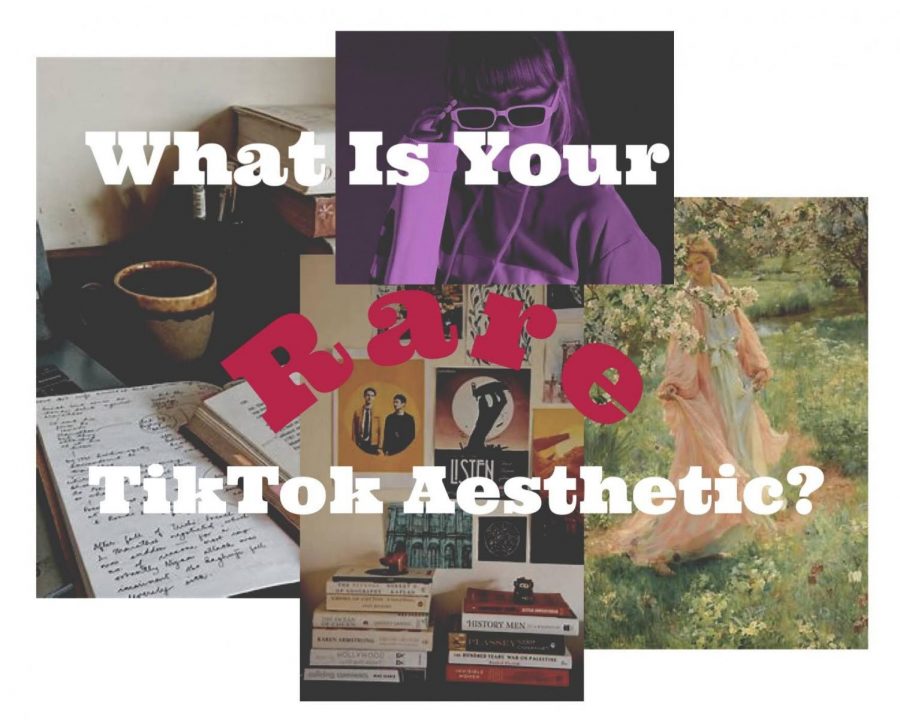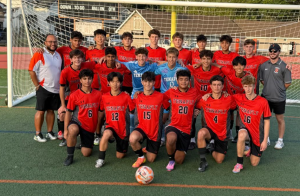What Is Your Rare TikTok Aesthetic?
From kidcore to cottagecore to dark academia, TikTok users are finding communities in aesthetics that promote inclusivity and gender fluidity during the pandemic.
December 13, 2020
Remember the VSCO girl—he suburban teenager dressed in oversized T-shirts and Birkenstocks, velvet scrunchies in hair, lugging a Hydro Flask? Now, with more people spending time exploring themselves in quarantine, lots of new ideas and trends are being shared all over social media, especially on TikTok. Aesthetics have branched out far beyond the most common ones, such as the E-Boy/Girl, Soft Girl, or Skater Boy. Keep in mind this is a guide and not a rulebook. The beauty of aesthetics lies in its flexibility: you can cherry-pick your favorite aspects of a certain aesthetic and turn it into your own. It’s now time to say goodbye to the basic VSCO girl and welcome the rare aesthetics of TikTok.
Dark Academia
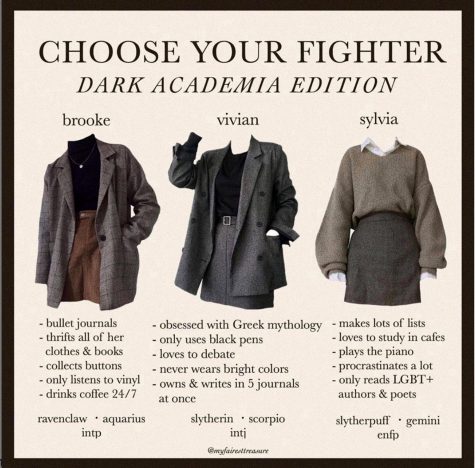
You’re pressing flowers into a leather-bound journal next to a crackling fireplace. You’re writing poems on the midnight train, leaning your head against the window, listening to the gentle rain. You love to reflect on philosophy in a room surrounded by piles of musty, obscure books while sipping steamy coffee or tea.
If any of these images spark a yearning feeling, you are probably a Dark Academic at heart. The aesthetic is inspired by prep schools and Ivy League schools in the 1940s, mimicking Hogwarts and lookbooks from “Dead Poets Society.” Dark Academia places an emphasis on classic literature and traditional learning, with various gothic elements weaved in. Think vintage tweed blazers, argyle sweaters, plaid pants, and black turtlenecks.
With a solid LGBTQ+ following, Dark Academia aims to be as inclusive and fluid as possible; its prized films and works of literature feature LGBTQ+ characters and authors. It is a very open community where anyone can be masculine or feminine. The Dark Academia subculture is filling the void of students who have the desire to learn at a time where school is far from traditional.
Grunge
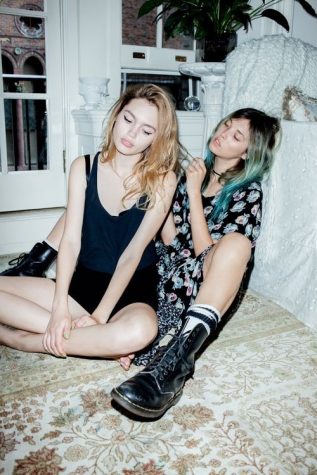
Imagine the grimy, vintage look of the ’80s. Featuring Hardcore bands, vinyl record players, and the color black, the Grunge aesthetic depicts a sense of hopelessness and disorder in society. “A lot of earth tones and pale colors are used to convey this sort of cultural depression often associated with Grunge,” according to the Aesthetics Fandom. The look is associated with flannels, ripped jeans, and black combat boots. Grunge artists of the time were generally dirt-poor, so they resorted to more durable clothing.
This aesthetic subculture can be easily confused with the e–girl/e–boy or gothic styles: high waisted pants, oversized graphic t-shirts, and silver chains. But Grunge is about more than just fashion; it’s about resonating with the music and ideologies. Grunge homes in on popular Metal, Punk, and alternative/indie rock music of the time, including bands such as Nirvana, Mudhoney, L7, and Soundgarden. Maya Zaya on YouTube explained that Grunge is more than just an aesthetic—it is a lifestyle. The subculture denounces ideologies such as capitalism, social norms, and materialism. “Everyone thinks that grunge aesthetic means being edgy and bad, but it also means listening to the right music, liking what you wear and listen to, it means being yourself,” wrote user ꧁R a i n y _ E y e z꧂ on YouTube. Grunge, similar to the emo aesthetic, transcends gender constructs by promoting the fluidity of male and female styles.
Cottagecore
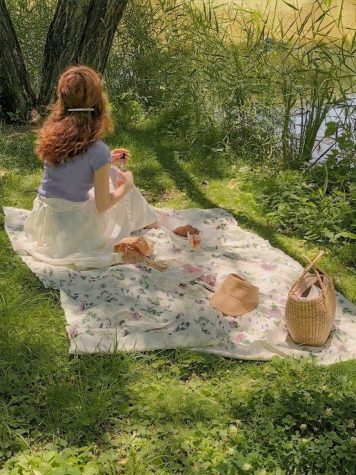
You’re in a white, cotton dress picking fresh strawberries in a field to bring back to your small but homely cottage. This is cottagecore: the romanticized interpretation of agricultural life, reminiscent of any work of Jane Austen. It’s dainty, serene, and liberating. It’s a way to spin the chaotic world we’re in into an idyllic life in the meadows.
There’s actually a separate term for that. According to Vox, “There is meadowcore (cottagecore but just the meadows), frogcore (cottagecore but just the frogs), goblincore (cottagecore but with mud and foraged mushrooms and gender-neutral clothing), and dozens of others even the most online young people have probably never heard of.”
When the pandemic hit and people were forced into isolation, cottagecore served as a channel for escapism. Cottagecore was floating around Tumblr and Pinterest for a bit before it found its relevance on TikTok and Taylor Swift’s indie album folklore. Amanda Brennan, a trend expert at Tumblr, said that “every time there’s been a spike in cases, there’s a spike in cottagecore right along with it.” There is a certain notion that life was better back then, longing for a wistful time before modern technology.
Y2K
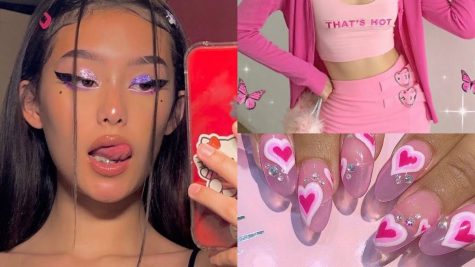
Y2K was popularized from around 1998 to 2003, a time when fashion and technology were just beginning to emerge. Named after the Y2K Bug, the aesthetic is marked by slick and futuristic fashion, mirroring techno-utopianism from the Y2K era. As people approached the millennium, there were seemingly endless possibilities in all aspects: culturally, visually, and stylistically.
It is characterized by rave and boy band outfits from the 2000s; figures such as Paris Hilton, Britney Spears, and Lindsay Lohan are also leading figures in the Y2K aesthetic. Additionally, futuristic films such as The Matrix incorporated tech elements into style. However, many believe that the Y2K style trending now does not have much of a resemblance to the original. There is an added Gen Z twist—it incorporates layered jewelry, decorative nail art, and charm bracelets. There is more glitter, rhinestones, and fake fur coats. With 2020 being marked by wildfires, riots, and a global pandemic, it’s no surprise that a better, futuristic aesthetic emerged in our vernacular.
Kidcore
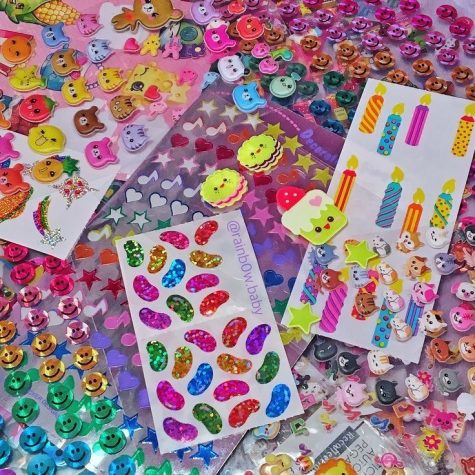
Do you remember the giant, colorful parachutes during gym class in elementary school? Do you remember the days of the CareBears and Winnie the Pooh? Beanie Babies and Furbies?
The kidcore aesthetic is all about nostalgic, quirky pieces; it’s about pairing mismatched colors and prints inspired by pop culture from the early 1990s and 2000s. It’s about prints that stand out: rainbows, smiley faces, and overall radiant positivity. “People started gravitating toward this dream sequence because the dark, grim reality behind their windows was nearly unbearable,” explained Piper Cashman and Amanda Adam of Zig Zag Good, a brand specializing in clothes that encapsulate the youthful vibe. They further explained that reminiscing on your childhood is soothing and comforting—that’s why we yearn for it so much.
Our childhood is filled with adventure and excitement. Kidcore reaches for the younger times, bringing you back to the stress-free days of childhood. “From gummy bears to butterfly clips, they transport you straight back to childhood, listening to Britney and collecting ’90s treasures, like Pokémon cards and jelly shoes,” said Instagram company Blackcurrant Pop. For many followers of the aesthetic, dressing in Kidcore can be seen as an act of liberation from the minimalist styles that now overpower the fashion world. The point of kidcore is to walk out in confidence, making strangers turn their heads. This trend runs much deeper than being just a fashion aesthetic; it’s a lifestyle and a source of hope for many creatives.
Ever since the pandemic forced the world into quarantine, there has been a surge of hyper-specific aesthetics in the media. Aesthetics serve as a channel to escape the harshness of reality, extending to music, interior design, and even food. However, what’s more important than these aesthetics is to dress in what makes you feel comfortable and confident. Have fun and dress in what makes you you.











































































































































